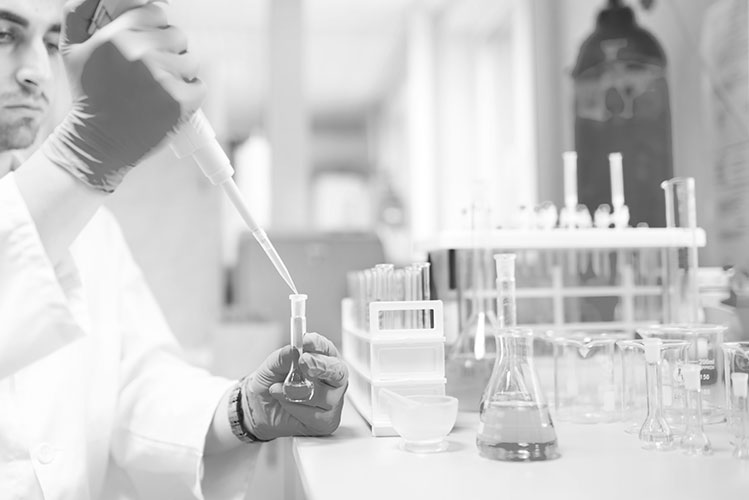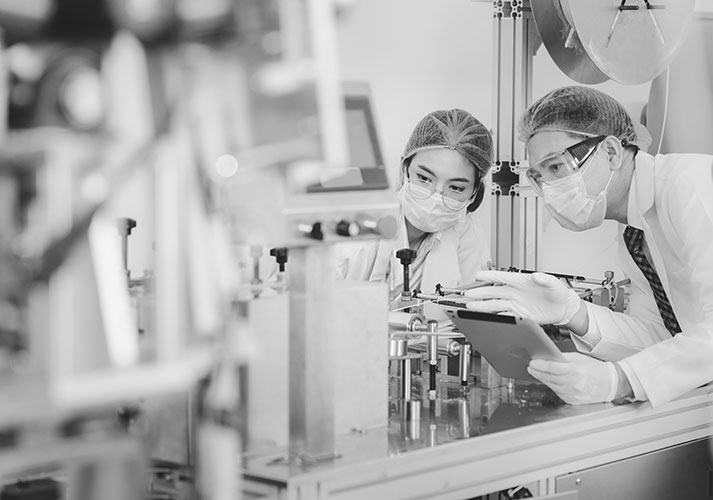PuraMatrix™ is a unique material available for regenerative medicine, cell therapy, drug delivery systems and other uses in many fields. We introduce our products while comparing them with other materials.
FAQ
FAQ
What are three-dimensional (3D) cell culture methods? What are the benefits?
3D cell culture methods include a manner using a culture carrier, and another using gyratory culture under microgravity conditions. 3D culture methods can show the ability of tissue formation of cells more obviously as compared with conventional two-dimensional (2D) culture methods using culture plates. Moreover, 3D culture methods are able to maintain the cell function at a higher level. Consequently, we can perform experiments under conditions close to in vivo environments. With such advantages, 3D methods have been widely used for function analyses of various cells, tissue engineering, etc
What are the similarities and differences points between PuraMatrix™ and other scaffold materials such as collagen?
One similarity is that PuraMatrix™ is applicable to cultures of various cells like other scaffold materials in studies of cell differentiation and tissue engineering. The differences are as follows. First, since PuraMatrix™ is an artificially synthesized product, there is no concern about infections, including BSE, unlike animal-derived scaffolds, and there are no differences among batches. Moreover, PuraMatrix™ is hydrogel that is softer than other artificial scaffolds, and has a feature to provide more appropriate environments for cells.
Materials
What is the molecular weight of a peptide of PuraMatrix™?
Approximately 1700.
Test Methods (in vitro/in vivo)
Why should cell culture inserts be used? What are they generally used for?
PuraMatrix™ Gels are formed from the noncovalent bonds of peptides; therefore, the gels may collapse from slight pressure such as water flow during gel formation. Cell culture inserts can make the mediums penetrate slowly through permeable membranes to form good consistent gels. In addition, cell culture inserts are helpful in changing the mediums easily without the risk of collapsing the gels. Accordingly, we recommend the method especially to those using PuraMatrix™ for the first time. Generally, cell culture inserts have been used when the type of cells cultured in the upper layer is different from that in the lower layer, or used for analyses of cell-derived fluid elements.
What is ultrasonication used for?
A portion of the peptides contained in samples of PuraMatrix™ solutions assembles by itself even with low pH levels and without salt. Ultrasonication is conducted to disrupt the bond completely before the experiment and reduce the viscosity of solutions to make handling easier. Ultrasonication also expels any remaining air from samples. It is effective in preventing air bubbles from entering the samples because the bubbles make gels fragile during formation.
Is the concentration of cells mixed with PuraMatrix™ fixed?
Although the protocol recommends using 1 x 106 cells/mL, there is no limitation. However, if cells are used in excess, the mixture may become cumbersome or the gels will not coagulate adequately.
Why is 10% sucrose solution used?
To adjust samples to be isotonic to in vivo environments (cells) without salt when handling cells.
I cannot collect only the cells from PuraMatrix™ Gels. Is there an appropriate method for this?
We have been reviewing our prepared protocol for harvesting cells at present. However, other analyses are also possible.
If cytokine is used, does it penetrate into PuraMatrix™ Gels?
The molecular weight of most cytokines is smaller than the network of gels; therefore, cytokines can penetrate into gels with mediums. There is also a method to mix them prior to gel formation. However, please note that the pH of PuraMatrix™ solutions is initially 3.
When cytokine and adhesive factor are mixed with PuraMatrix™, the product should preferably be adjusted to be neutral because they are susceptible to low pH levels. When is the best time to mix them?
For adhesive factor, please refer to our protocol. Cytokine can penetrate into gels with mediums after mixing it with the medium. The strategy has been considered for factors affected by low pH levels.
For PuraMatrix™, is the speed of gelatinization adjustable in the same manner as collagen gels, such as by temperature? (In other words, is it possible to melt it at 4°C, and gelatinize it by raising the temperature?)
PuraMatrix™ is gelatinized depending on the pH and the concentration of salt. Temperature does not affect the physical properties.
What degrades gels during culture?
In the first pathway, this material has sequence RADA and forms nanofibers with beta-sheet structures from the ionic bond between adjacent molecules of peptides (R-D) and hydrophobic bonds between A and A. This collapse of fibers means that the degradation of gels occurred, and most causes of the collapse contribute to the disruption of bonds between A and A as well as R and D. The second pathway is hydrolytic degradation with enzymes contained in the mediums. Since the first one is the primary pathway, gels are degraded over time even if serum-free mediums (e.g., PBS) are used for gel formation. At the macro level, gels are fragmented by physical stimuli, resulting in accelerated degradation.
If the PuraMatrix™ solution at pH 3 was injected directly, does inflammation occur?
In an animal model for which PuraMatrix™ was embedded within the muscles, no severe inflammation was observed in the tissues.
Test Methods (analyses)
How can the cell survival rate be confirmed?
You can count cells after harvesting cells and staining them with trypan blue according to the protocol.
How can I compare protein expression after 3D culture using PuraMatrix™ with a conventional 2D method?
Immunostaining procedure is recommended. Western-blot technique can also be used for the comparison of protein expression after harvesting cells from the dish.
Are Western-blot techniques and immunostaining procedures feasible for samples mixed with PuraMatrix™?
Yes, they are. However, for the immunostaining procedure, the nonspecific adsorption of primary antibodies may cause a high background. High concentration antibodies and taking a long time for washing would provide good results (refer to our protocol for immunostaining procedure).
Does the peptide penetrate into the skin?
It is said that materials with a molecular weight of up to about 600 can penetrate the skin. Since the molecular weight of PuraMatrix™ peptide is approximately 1700, it does not penetrate the skin.
How can the degree of hardness of the gel be increased?
Harder gel can be formed to some extent by increasing the PuraMatrix™ concentration.
Is PuraMatrix™ available for humans?
Our company has planned to apply for medical device approvals in the United States and Japan; however, PuraMatrix™ is a research reagent, and the samples provided under the MTA are strictly prohibited for human use including clinical studies at present.





